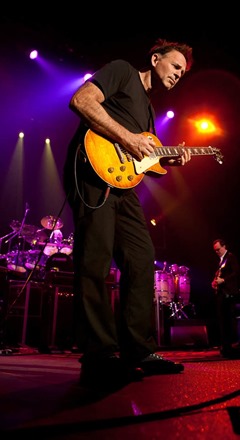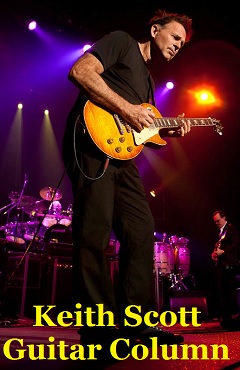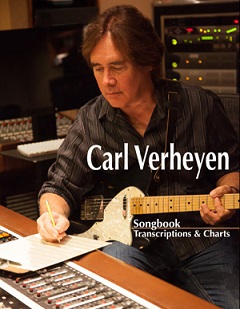
Tonality
Websters dictionary says the description of tonality is something like this:
“ the organization of all the tones and harmonies of a piece of music in relation to a tonic”..or..”tonal quality..”
Albeit, the use of the word tonality can also apply to the art world, but since my main focus is music, We shall leave that to the future Picasso’s of our generation..
I do get the occasional question about guitar tone and specifically, electric guitar tone. or tones..I think its a simplified way of asking, “how do you get the sounds everyone hears while you are recording or performing?” Its a lot less simple than that unfortunately. So many different theories have been discussed in blogs and web pages around the internet world about this very subjective topic..First, I think, is the individual who is providing the guitar “tone”.
Most people agree that when a particluar guitarist plays a guitar the player will “hear” an instrument in a certain way in his or hers head, the result of which is when they play ANY guitar. The sound that emanates is distinctly their own..It has the “earmarks” of the signature sound which resides in their head Which transmits from their own brain through the fingers..So the process is forged within the physical self and generally will consistently sound that certain way… well, in most cases..Just a theory mind you..
Now there several variables to this idea. Mostly that the environment changes constantly from day to day, and the end result can vary a lot..
But in a controlled situation, ie: recording studio, It appears that the guitarist will go with what they hear in their mind..Also there can be a conscious effort to change the sound so much that even the player will be astonished at how different they sound.
So with all that, what is the end tonality result?
We start with an guitar, an instrument the player feels good about, their main “axe”.
then and amplifier of choice or direct input whatever is the players preference..
First make sure there is little or no background noise, ie: hum or buzz.
Choosing good quality cables and connectors sure helps with this.
One of the most important things i learned over the years when recording was the amount of clean signal to the amp..I always thought a very distorted amp would be clear sounding..in fact even a little distortion tends to be unclear and the more distortion there is the more other intstruments can suffer in the mix since there tends to be a masking effect going on by the distortion…But really its personal choice..
With new audio workstation software, a very convincing distorted sound can be achieved with a direct signal! I always preferred a solid tube amp sound thoough there is very good solid state amp choices available..I have used a little Vox DA-5 a lot at home..a great idea starter since it has some cool onboard effects and you direct line the output into a recording desk easily..But not much else has the sweet natural overdriven sound of an old fender or vox amp..2 of my favorite choices for recording..I have used an old early 1960’s Vox AC-30 for many recordings and a 1964 Fender Deluxe Reverb, both good “desert island” amp choices…Run the cable into the higher level input jack for a wider sound pallette.We have also run into the normal channel of a 1960‘s vintage era Vox ac-30 and place a treble booster into that. (Pete Cornish Industries makes a wonderful one..)..The result is a full and sustained signal which will clean right up as you roll the volume control on the guitar down..Or a suitable compressor or line driver into the high level input of your amp will give you an added tonal “bump”..A cleaner signal is easy to obtain by simply rolling the guitar volume down if needed..Of course the more effects pedals or stompboxes you add, eventually may take some “tone” away…
Another good consideration is placing a microphone in a place that takes advantage of the amps character..I always liked having the mic a fair distance from the amps speaker..To me it adds a new tonal dimension by using the room as a tone enhancer, providing there is a good sized room to record in. We have put amps in a little closet for isolation reasons, and though it has a unique sound is limited in tonal choices..
With those factors in place, its up the the individual on how much to add at the desk as far as eq, compression, or effects..Generally I tend to keep the signal as is, until mix time, which is a whole different subject!
Go for tone!
Keith Scott
http://www.facebook.com/theauthorisedkeithscottfanclub
http://www.keithscottfanclub.com/

